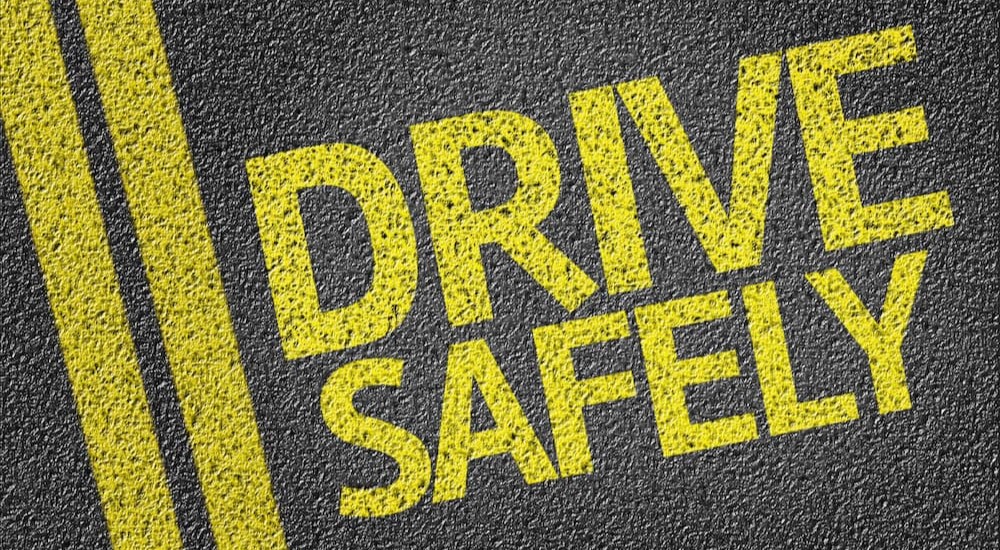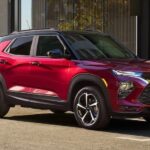Car safety is sexy—there, I said it. Some people might think that stats or regulations for vehicle safety are boring or uninteresting, but as far as I’m concerned, they’re some of the most interesting parts of the auto industry. Sure, they’re not flashy like a mid-engine sports car or brag-worthy like a truck that can haul 30,000+ lbs of weight behind it, but they’re essential for ensuring that all of us get home safely every time we get behind the wheel.
Safety regulations were essentially nonexistent a century ago, so it’s remarkable to see how far we’ve come and how much room there is for further improvement. One of the leading agencies in the US regarding vehicle and road safety is the National Highway Traffic Safety Administration (NHTSA), which is part of the US Department of Transportation. The NHTSA sets standards for required safety features and technology, tests vehicles to see how safe they are, and informs the public about recalls. Let’s take a look at some of the most recent information and plans released by the NHTSA to help keep us safe on the road.

A Friendly Reminder: Buckle Your Seat Belt
It seems bizarre to me that in 2023 the NHTSA still has to remind people to wear seat belts, but I suppose it shouldn’t, considering that people have protested seat belt laws here in the US ever since they started being introduced. That being said, wearing a seat belt is one of the best ways to keep yourself safe when you get into a vehicle and probably the best way if you’re not driving. If you’re driving, following safe habits, including maintaining a safe speed and distance from other vehicles, is the best thing you can do—but for everyone else, seat belts are the way to go.
That said, half of all passenger vehicle occupants killed in traffic crashes in 2021 weren’t wearing a seat belt. This is based on instances where restraint use could be determined, and 2021 is the most recent year this data is currently available for. In addition, 60% of pickup truck drivers killed in a collision were unrestrained, while 49% of SUV drivers, 47% of passenger car drivers, and 44% of van drivers weren’t wearing seat belts. When looking at different age groups, the worst offenders are people between the ages of 25 and 34, in which case 61% of passenger vehicle occupant fatalities were unrestrained. So truck drivers and folks in their mid-20s to mid-30s seem to be the worst about this; it just takes two seconds to fasten your seat belt, and it can absolutely save your life.
Proposal for Pedestrian Protection Testing
Here’s a horrifying statistic: in 2020, pedestrian injuries accounted for less than 3% of all motor occupant injuries, yet pedestrian deaths represented 17% of all traffic fatalities. In fact, passenger vehicle occupant fatalities decreased substantially between 2000 and 2020, but during that same time, pedestrian fatalities increased by 37%! Fortunately, vehicle-to-pedestrian crashes are not as common as vehicle-to-vehicle collisions, but they’re incredibly dangerous and often fatal for any pedestrian involved. As someone who likes to go for walks, this sort of thing gives me pause.
In response, the NHTSA has proposed an update to its New Car Assessment Program (NCAP) to help address this problem. The NCAP involves safety testing and assessment for all new passenger vehicles resulting in a rating from the NHTSA. This proposed change would establish new procedures to test how well a vehicle protects pedestrians in the event of a collision or avoids such a collision completely. You can already see a fair number of vehicles hitting the road these days with pedestrian detection as part of their Forward Collision Warning and Automatic Emergency Braking (AEB) systems, and this new testing could make such systems even more common.
Traffic Fatalities Down in 2023
This is a bit of a “good news/bad news” situation, so I apologize in advance for some of the statistics that are about to follow (don’t blame me, blame unsafe drivers). First, the good news: based on early data and estimates, it looks like motor vehicle traffic fatalities for the first quarter of 2023 are down from the same time period last year. There were an estimated 9,645 fatalities in the US from January through March of 2022; for the same period in 2023, there were an estimated 9,330 deaths, or a decrease of about 3.3%. Also, good news, when looking at these fatalities as a rate per 100 million vehicle miles traveled (VMT), which can be a more-accurate comparison point, the rates still went down from 1.32% to 1.24%.
But now the bad news, this is still much higher than just a few years ago, though there’s some hope that things are moving in the right direction. In the last decade, things were best in the first quarter of 2014, when there were only 6,856 deaths or a rate of 0.99 fatalities per 100 million VMT. These numbers went up a few years but began falling again and were under 8k fatalities for the first quarters of 2019 and 2020, but they climbed horrendously in the last two years. Here’s some more good news, though: in the first quarter of 2022, the fatalities increased by 8.7% from the previous year, but they’ve been going down every quarter since then, and the first three months of 2023 continue this trend for the fourth straight quarter. Let’s hope it continues.
Proposal for Automatic Emergency Braking Requirements
It’s interesting that fatality rates have climbed so much in recent years considering vehicles have never been safer than they are right now. When it comes to advanced safety technology and driver assistance features, we’ve never seen more options or greater availability than right now, but that’s not enough. The NHTSA has recently announced they want one system, in particular, to become standard on all vehicles: Automatic Emergency Braking.
AEB systems use radars and/or cameras along with other technology to detect a potential crash and automatically engage the brakes if you don’t hit the pedal. If you hit the brakes, they can help boost the braking force even more to support you and try to avoid a crash. This technology is not mandatory in vehicles, though I’ve noticed more and more manufacturers making it standard on all versions of certain models.
The NHTSA recently proposed that AEB should be mandatory on all heavy vehicles, which includes heavy-duty commercial trucks and buses. This comes just a month after making a similar proposition that AEB should be mandatory on all passenger cars and light trucks. In other words, they want all vehicles to come with AEB standard, in the same way backup cameras, seat belts, and airbags are now mandatory. If the rule goes forward and becomes published as part of national safety regulations, manufacturers would have up to three years to ensure all new models come with AEB technology.
Nothing Is More Important Than Safety
At the end of the day, this is what it all comes down to. No features in a vehicle, no powerful engine, and no impressive towing capacity matter if a vehicle can’t help you get home. Of course, human error and unsafe behavior can always work against the most advanced safety features, but every little bit helps, and it’s always a good idea for us to remember to buckle up, slow down, and watch out for each other on the road. Even a few changes to adopt safe habits can mean the difference between getting home in one piece and having your life change irrevocably. I’d say that it’s more than worth the effort to slow down a bit and always pay attention when we’re behind the wheel.






